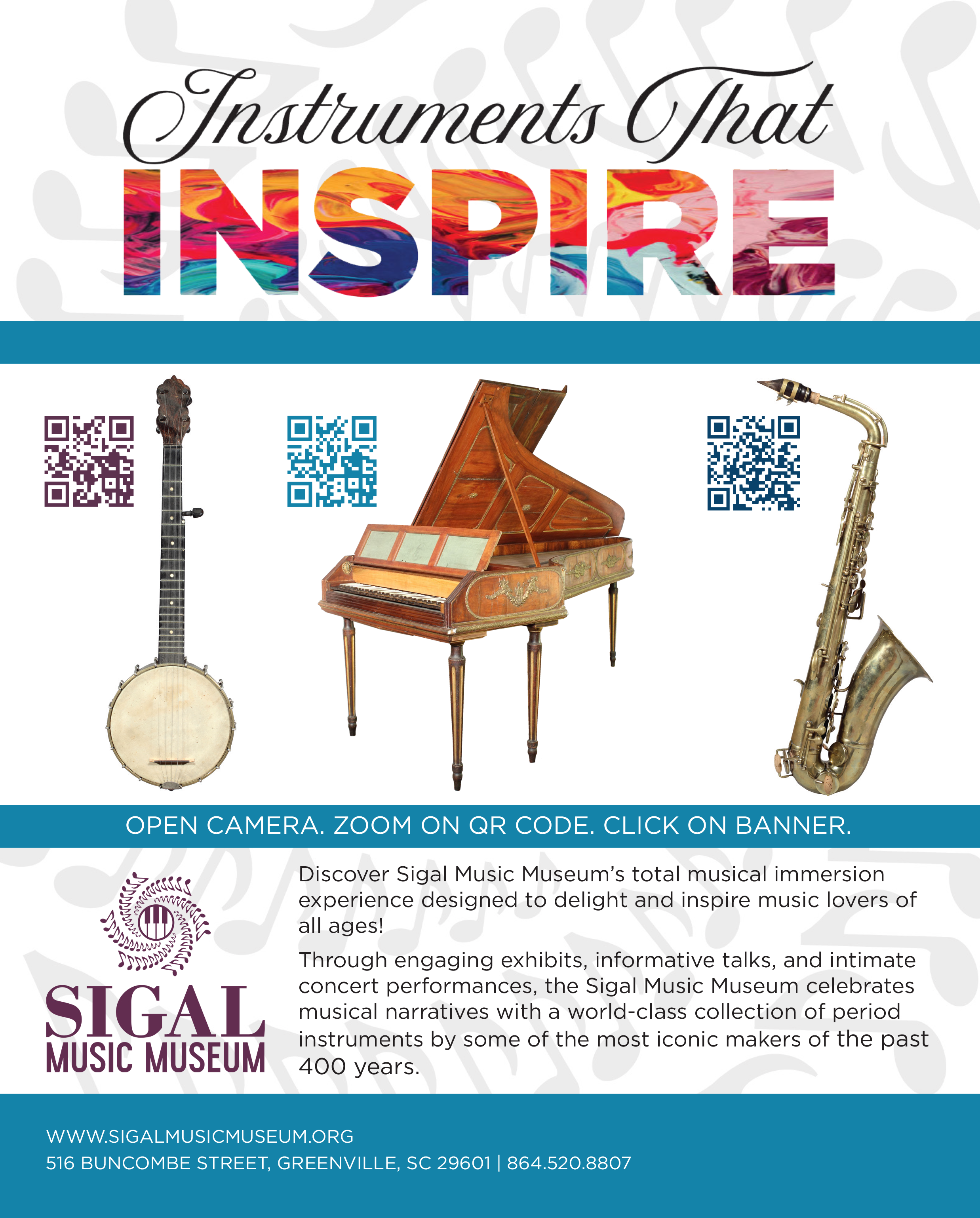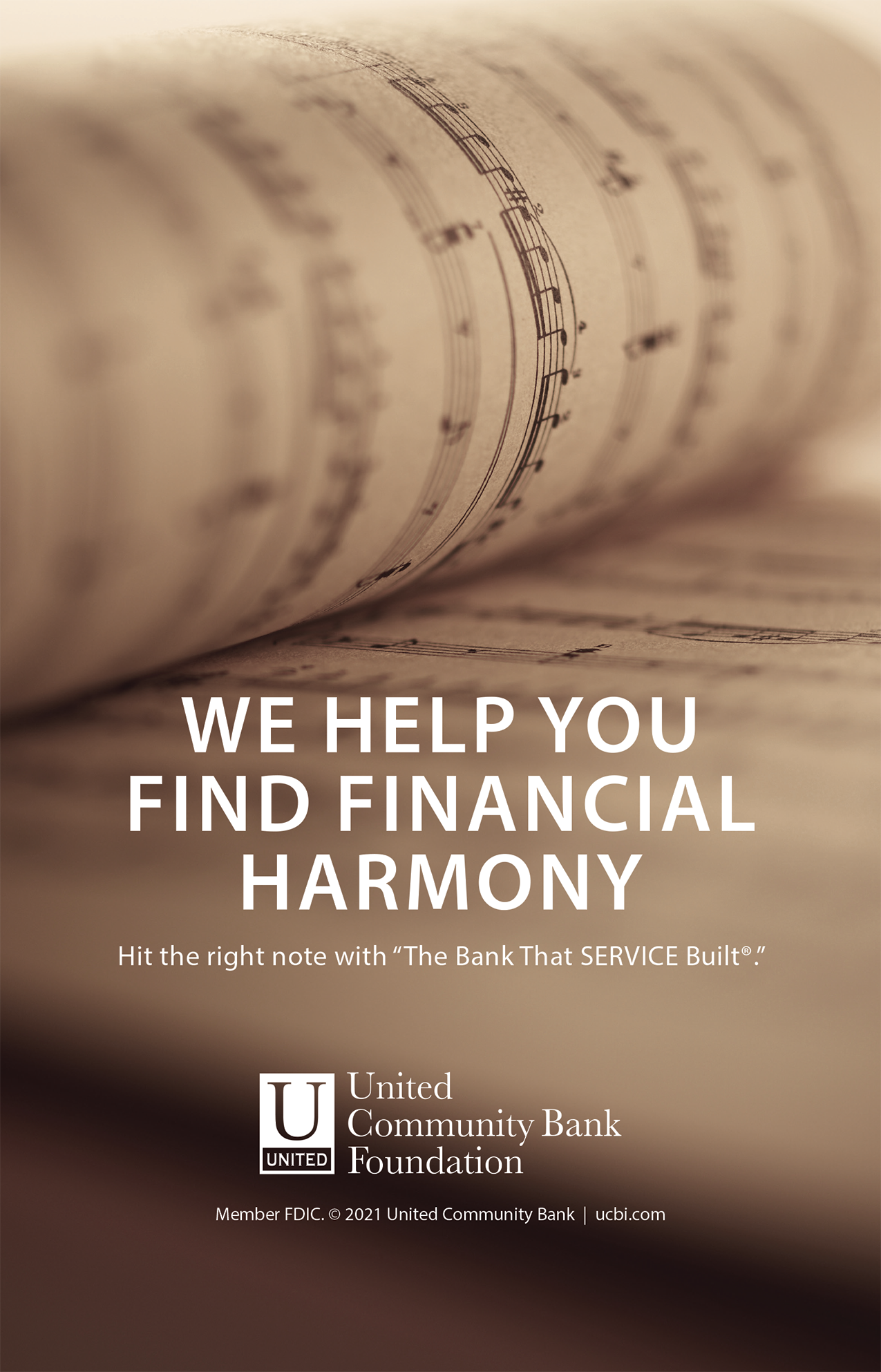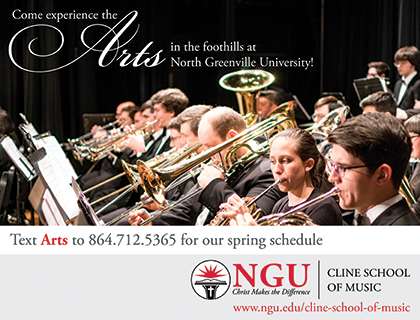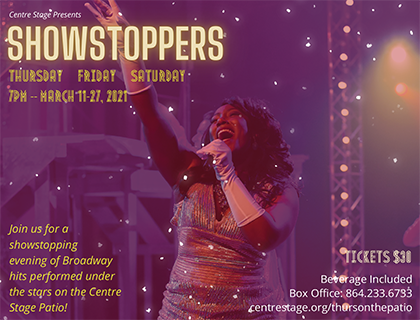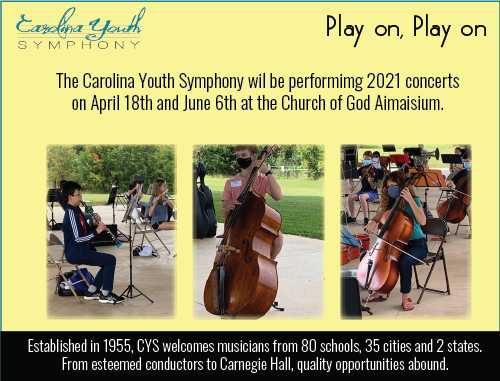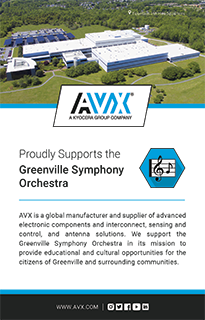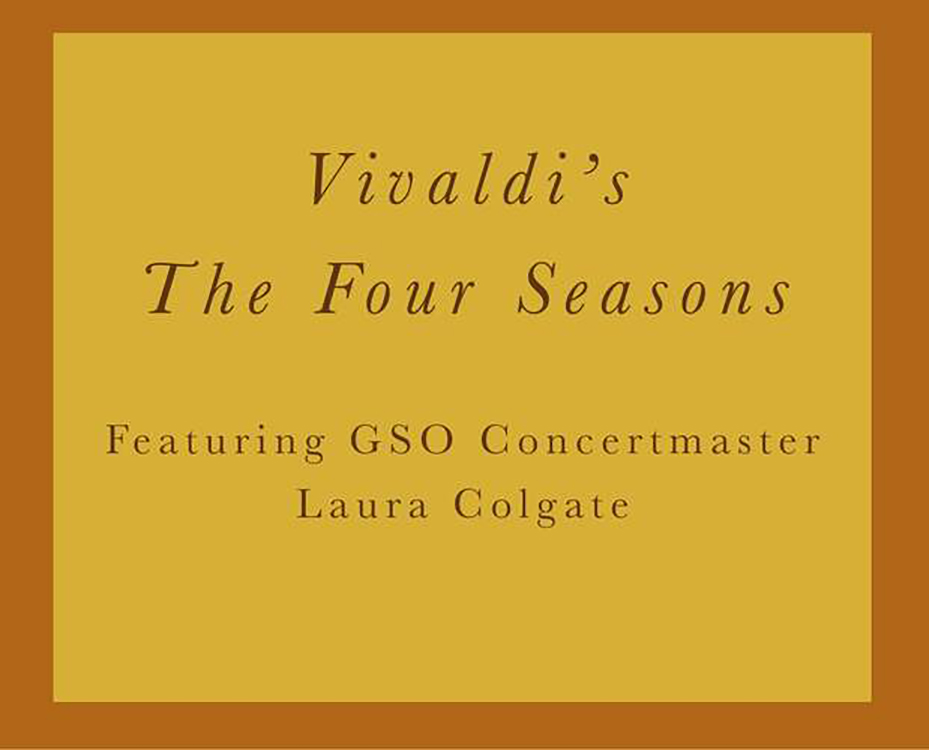
Saturday, March 27, 2021 at 8:00 p.m.
Sunday, March 28, 2021 at 3:00 p.m.
Peace Concert Hall
Edvard Tchivzhel, conductor
Laura Colgate, violin
| A. VIVALDI (1678-1741) |
The Four Seasons Spring: Allegro – Largo – Allegro: Danza pastorale Summer: Allegro non molto – Adagio – Presto Autumn: Allegro – Adagio molto – Allegro Winter: Allegro non molto – Largo – Allegro
|
| F.J. HAYDN (1732-1809)
|
Symphony No. 82 |
THE FOUR SEASONS:
| Concerto No. I in E Major, RV 269, "SPRING" | Allegro Largo Allegro (Pastorale dance) |
| Concerto No.2 in g minor, RV 315, "SUMMER" | Allegro non molto - Allegro Adagio - Presto - Adagio Presto (Summer Storm) |
| Concerto No.3 in F Major, RV 293, "AUTUMN" | Allegro (Peasant Dance and Song Adagio molto (Sleeping Drunkards) Allegro (The Hunt) |
| Concerto No.4 in f minor, RV 297, "WINTER" |
Allegro non molto Largo Allegro |
One of the earliest uses of music was in the accompaniment of theatrical dance and story-telling, so it is natural that composers should from time to time produce what we know as "program music" - music written to portray events, activities or moods such as pastoral scenes or storms. Music representing the moods of the four seasons has always been popular, and baroque composers such as Werner and Fischer an1ong others produced cycles of concertos representing the fours seasons. But none were to do so in such precise pictorial detail as Antonio Vivaldi in his Four Seasons concertos.
As a descriptive basis for his Four Seasons, Vivaldi took four Sonnets, apparently written by himself. Each of the four sonnets is expressed in a concerto, which in tum is divided into three phrases or ideas, reflected in the three movements (fast-slow-fast) of each concerto. The published scores (by Estienne Roger of Amsterdam in 1725) are marked to indicate which musical passages are representative of which verses of the sonnet. It is advisable, at least during the first few hearings, to follow the sonnets and music together, for they are bound up with one another to an extent rarely heard in any other programmatic pieces either of the baroque period or subsequently.
ANTONIO VIVALDI(1678-1741)
The Four Seasons
The Modern Chamber Orchestra
Spring - Concerto in E Major
Allegro
"Giunt' e la Primavera e festosetti
La Salutan gl' Augei con lieto canto,
E i fonti allo Spirar de' Zeffiretti
Con dolce mormorio Scorrono intanto:
Vengon' coprendo l' aer di nero amanto
E Lampi, e tuoni ad annuntiarla eletti
indi tacendo questi, gl' Augelletti;
Toman' di nuovo al lor canoro incanto:"
Allegro
Springtime is upon us.
The birds celebrate her return with festive song,
and murmuring streams are softly caress the breezes.
Thunderstorms, those heralds of Spring, roar,
casting their dark mantle over heaven,
Then they die away to silence, and the birds take
up their charming songs once more.
Largo
"E quindi sul fiorito ameno prato
Al caro mormorio di fronde e piante
Dorme 'l Caprar col fido can' a lato."
Largo
On the flower-strewn meadow, with leafy
branches rustling overhead, the goat-herd sleeps,
his faithful dog beside him.
Allegro
"Di pastoral Zampogna al suon festante
Danzan Ninfe e Pastor nel tetto amato
Di primavera all' apparir brillante."
Allegro
Led by the festive sound of rustic bagpipes,
nymphs and shepherds lightly dance beneath the
brilliant canopy of spring.
Summer - Concerto in g minor
Allegro non molto
"Sotto dura Staggion dal Sole accesa
Langue l' huom, langue 'l gregge, ed arde il Pino;
Scioglie il Cucco la Voce,· e tosto intesa
Canta la Tortorella e 'l gardelino.
Zeffiro dolce Spira, ma contesa
Muove Borea improviso al Suo vicino;
E piang·e il Pastorel, perche sospesa
Teme fiera borasca, e 'l suo destino;"
Allegro non molto
Beneath the blazing sun's relentless heat
men and flocks are sweltering,
pines are scorched.
We hear the cuckoo's voice; then sweet songs of
the turtle dove and finch are heard.
Soft breezes stir the air....but threatening north
wind sweeps them suddenly aside. The shepherd
trembles, fearful of violent storm and what may
lie ahead.
Adagio e piano - Presto e forte
"Toglie alle membra lasse il Suo riposo Adagio e piano - F esto eforte
II timore de' Lampi, e tuoni fieri
Ede mosche, e mossoni il Stuol furioso!"
Adagio e piano - Presto e forte
His limbs are now awakened from their repose
by fear of lightning's flash and thunder's roar, as
gnats and flies buzz furiously around.
Presto
"Ah che pur troppo i Suo timor Son veri
Tuona e fulmina il Ciel e grandioso
Tronca ii capo alle Spiche e a' grani alteri.11
Presto
Alas, his worf! fears were justified, as the
heavens roar and great hailstones beat down
upon the proudly standing corn.
Autumn - Concerto in F Major
Allegro
"Celebra il Vilanel con balli e Canti
Del felice raccolto il bel piacere
Edel liquor de Bacco accesi tanti
Finiscono col Sonno il lor godere"
Allegro
The peasant ctebrates with song and dance the
harvest safely gathered in.
The cup of Bacchus flows freely, and many find
their relief in deep slumber.
Adagio molto
"Fa ch' ogn' uno tralasci e balli e canti
L' aria che temperata da piacere,
E la Staggion ch' invita tanti e tanti
D' un dolcissimo Sonno al bel godere."
Adagio molto
The singing and the dancing die away
as cooling breezes fan the pleasant air,
inviting all to sleep
without a care.
Allegro
"I cacciator alla nov' alba a caccia
Con corni, Schioppi, e canni escono fuore
Fugge la belua, e Seguono la traccia;
Gia Sbigottita, e lassa al gran rumore
De' Schioppi e canni, ferita minaccia
Languida di fuggir, ma oppressa muore."
Allegro
The hunters t dawn,
ready for the chase,
with horns and dogs and cries.
Their quarry flees while they give chase.
Terrified and wounded, the prey struggles on,
but, harried, dies.
Winter - Concerto f-minor
Allegro non molto
"Aggiacciato tremar tra neri al gen ti
Al Severo Spirar d' orrido Vento,
Correr battendo i piedi ogni momento;
E pel Soverchio gel batter i denti;”
Allegro non molto
Shivering, frozen mid the frosty snow in biting,
stinging winds;
running to and fro to stamp one's icy feet, teeth
chattering in the bitter chill.
Largo
“Passar al foco i di quieti e contenti
Mentre la pioggia fuor bagna ben cento"
Largo
To rest contentedly beside the hearth, while those
outside are drenched by pouring rain.
Allegro
Caminar Sopra 'l giaccio, ea passo lento
Per timor di cader gersene intenti;
Gir forte Sdruzziolar, cader a terra
Di nuove ir Sopra 'l giaccio e correr forte
Sin ch' il giaccio si rompe, e si disserra;
Sentir uscir dalle ferrate porte
Sirocco Borea, e tutti i Venti in Guerra
Quest' e 'l vemo, ma tal, che gioja apporte."
Allegro
We tread the icy path slowly
fear of tripping and falling.
Then tum abruptly, slip, crash on the ground and,
rising, hasten on across the ice lest it cracks up.
We feel the chill north winds coarse through the
home despite the locked and bolted doors ...
this is winter, which nonetheless brings its own
delights.
Franz Joseph Haydn (1732-1809)
Symphony No. 82, “The Bear”
Program Notes by Paul Hyde
They called him “Papa” Haydn. Musicians in his orchestra gave the Austrian composer the nickname because of his friendly concern for their welfare. But he was another kind of “Papa,” too: father of the string quartet and symphony. His symphonic model became the standard for generations of composers.
Haydn was an enormously prolific composer, writing 104 symphonies. The Symphony No. 82 is among six (Nos. 82-87) he wrote for Parisian audiences in 1785-86.
The symphony features a curious subtitle, “The Bear,” inspired by a repeated drone sound in the fourth movement that reminded Paris concertgoers of the bagpipes that often accompanied dancing bears — then a popular form of street entertainment. Other observers say the low drone might have suggested the actual growl of a bear.
The symphony is a work of great energy, charm and wit.
- Vivace assai. The first movement is festive, opening with a rising theme, followed by a softer, more intimate phrase for strings, then a brilliant fanfare. In a few measures, then, Haydn has announced the material that will dominate the movement.
- Allegretto. The second movement is written in the form of a graceful theme and variations. The main theme is a simple tune, with the first half in F major and the second half in the minor mode. Haydn puts this primary subject through a variety of creative variations.
- Menuetto. The third movement is a stately minuet. Delicate woodwind solos provide contrast.
- Finale: Vivace. The low strings provide the soft drone-like sound against which the high strings and woodwinds weave an irresistible dancing theme. The high-spirited proceedings bring the symphony to an exuberant conclusion.
Paul Hyde is the longtime program annotator for the Greenville Symphony. Follow Paul on Facebook and Twitter: @PaulHyde7.
| VIOLIN |
| Mary Lee Taylor Kinosian Concertmaster, Leila Cunningham Roe Endowed Chair |
|
Catherine Hazan Assistant Concertmaster, |
| Carol Roosevelt |
| Robin Hague Els |
| Sarah Land |
| James R. Johnston |
| David Edwards |
| VIOLIN |
| Joanna Mulfinger Principal |
|
Xiaoli Saliny Assistant Principal |
| Jonathan Urizar |
| Elizabeth Fee |
| Kirsten Browning |
| Kathleen Robinson |
| Catherine Crowe |
| VIOLA |
|
Arthur Ross III Principal, |
| Alvoy Bryan, Jr. Assistant Principal |
Michael Holub |
| Carolyn Alford |
| CELLO |
| Ismail Akbar Principal, Guild of the Greenville Symphony Endowed Chair |
Ryan Knott Assistant Principal |
David Saliny |
| Dusan Vukajlovic |
| DOUBLE BASS |
| Tim Easter Principal, Anonymous Endowed Chair |
Ian Bracchitta Assistant Principal |
Todd L. Beal |
| FLUTE |
| Caroline Ulrich Principal, Alice and Jerry Lenz Endowed Chair |
Wendy Cohen |
| OBOE |
| Virginia Zeblisky Metzger Principal, Guild of the Greenville Symphony Endowed Chair |
Kelly Mozeik |
| CLARINET |
| Anthony Marotta Principal, Harriet and Jerry Dempsey Endowed Chair |
Kyra Krenitsky Zhang |
| BASSOON |
| Lauren Piccirillo Waid Principal, Anonymous Endowed Chair |
Stephanie Lipka |
| HORN |
| Anneka Zuehlke-King Principal, Charles W. Wofford and Nancy B. Thomas Endowed Chair |
Elizabeth Regas |
| Christina Cornell |
| Darian Washington |
| TRUMPET |
| Phillip Elkins Co-Principal, Beverley and Jim Whitten Endowed Chair |
Kevin Lyons Co-Principal |
| TROMBONE |
| Stephen Wilson Principal |
Zsolt Szabo |
| Richard deBondt |
| TUBA |
| Don Strand Principal |
| TIMPANI |
| Daniel Kirkpatrick Principal, Nancy B. Stanton Endowed Chair |
| PERCUSSION |
| Courtney McDonald Bottoms Principal |
Edward C. Nagel Assistant Principal |
Gary Robinson |
| HARP |
| John Wickey Principal |
| HARPSICHORD |
| Lisa Kiser Principal, Beth Mar Lee Endowed Chair |
| PRODUCTION MANAGER |
| Laura Auvil |
| PRINCIPAL LIBRARIAN |
| John Wickey |
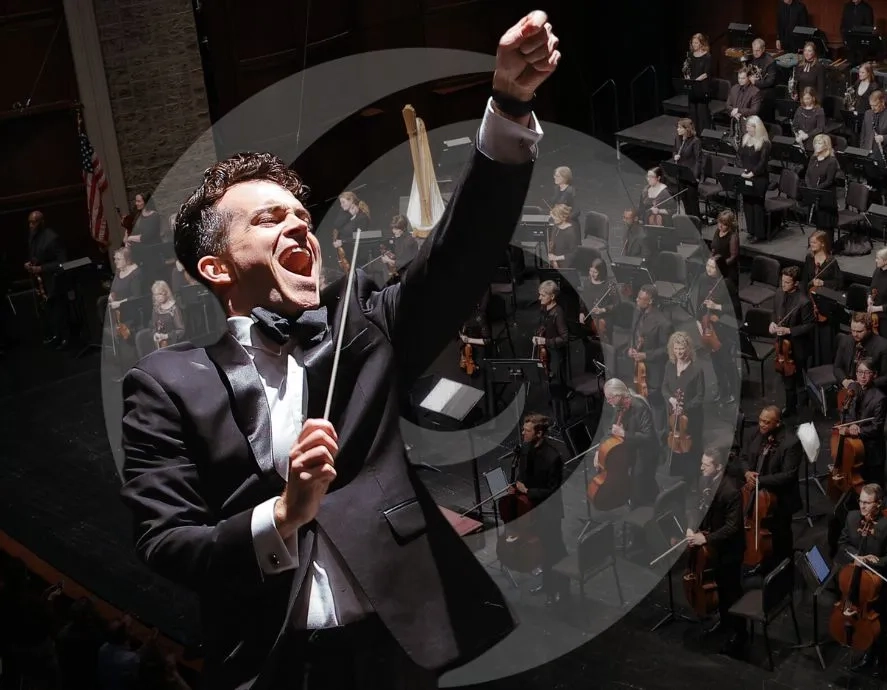
Concert Hall Series
Saturday performances at 7:30
Sunday at 3:00 pm
Opening Night: Hollywood Retrospective
October 4 & 5
An American in Paris
November 22 & 23
Dvořák’s Cello Concerto
February 7 & 8
Grand Canyon Suite + Rachmaninoff 2
March 14 & 15
West Side Story Symphonic Dances
+ Fanfare for the Common Man
April 11 & 12
Season Finale: Porgy and Bess
May 16 & 17
Gunter Theatre Series
Peter and the Wolf
November 1 at 3:00 pm
November 2 at 3:00 pm
Dvořák’s American String Quartet
February 14 at 7:30 pm
February 15 at 3:00 pm
The Last Five Years:
American Music Now
March 28 at 7:30 pm
March 29 at 3:00 pm
Dicey Langston:
The South Carolina Girl Who Defied an Army
April 25 at 3:00 pm
April 26 at 3:00 pm
Special Concerts
Holiday at Peace
December 12 at 7:00 pm
December 13 at 7:00 pm
December 14 at 2:00 pm
Peace Center
Harry Potter and the Goblet of Fire™ in Concert
January 10 at 1:00 pm and 7:00 pm
January 11 at 2:00
Peace Center
Chamber Music Series
American Echoes: from Apollo to Bluegrass
September 23 at 5:30 pm, Warehouse Theatre
September 24 at 7:00 pm, Hotel Hartness
Rhythms of the Night: A Tango Affair
February 24 at 5:30 pm, Centre Stage
February 25 at 7:00 pm, Hotel Hartness
Details and tickets available at greenvillesymphony.org
